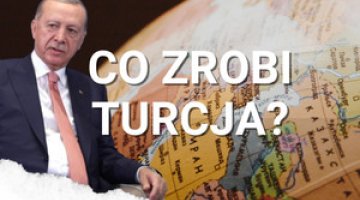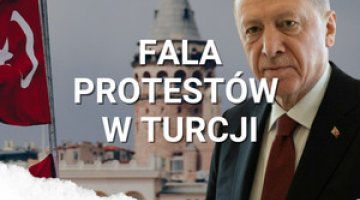Turkey’s Syria policy on the defensive
On the night of 21/22 February, Turkish soldiers evacuated from Syria the remains of Suleiman Shah, the ancestor of the founders of the Ottoman dynasty, as well as 38 Turkish soldiers who had been guarding the tomb. The tomb was located on Syrian territory about 30 km from the border with Turkey, and was a formal exclave of Turkey. In the last six months, the surrounding lands have been overrun by militants of the Islamic State (IS). They harassed the Turkish guards, blocked communication between the exclave and Turkey, and threatened to destroy the tomb (as Salafists, they deem any cult of the dead to be idolatry). After the liquidation of the old tomb, Turkey has started construction of a new one – also in Syria, but only around 200m from the border with Turkey, in an area controlled by the Kurds. The operation was coordinated with the Kurds of the PYD, the Syrian branch of the Kurdistan Workers Party (PKK). According to media reports, the transfer of the tomb was carried out in consultation with the Islamic State, which did not offer any resistance to the Turkish military.
Commentary
- This operation was predominantly political in nature; it reflects the characteristics of Turkey’s policy towards the Syrian conflict. Firstly, Ankara is avoiding direct participation in the fighting in Syria; hence the decision to avoid an armed defence of the Turkish enclave, and to remove a potential flashpoint in relations with the IS. For the Turkish government, this is particularly important in the light of the elections planned for June (the Turkish public is reluctant to get involved in the war in Syria). Secondly, Turkey recognises the continued rule of the Assad regime as a source of destabilisation in Syria. This is why it is avoiding becoming involved in other conflicts, which from its point of secondary importance, such as the fight against the IS. Thirdly, Turkey prefers to act alone, on its own terms, including in its contacts with terrorist organisations (Ankara has not participated in the United States-led military campaign against the IS). From the symbolic perspective, the operation was intended to show Turkey’s determination to defend its historical heritage; and in military terms, to demonstrate the power of the Turkish army (around 600 soldiers and nearly 100 vehicles, including 39 tanks and drones, were deployed in the evacuation).
- The operation signals a readjustment in Turkey’s assessment of the situation in the region. Ankara sees the IS as an increasingly problematic player. Also the unprecedented direct cooperation with the PYD is evidence of at least a temporary acknowledgement that the Kurds are in charge of some areas of northern Syria, after they managed to defend these territories against the IS’s offensive in 2014 (including the successful defence of the town of Kobani). This contrasts with Turkey’s previous policy of isolating and undermining PYD.
- Turkish government propaganda has portrayed the operation as a great success. However, the de facto surrender of territory to the jihadis, in cooperation with the Kurds of the PYD whom Ankara has traditionally portrayed as a threat, proves that Turkey’s policy towards the Syrian war is deeply defensive. Attempts to play off the IS and the Kurds against each other (as happened during the months-long siege of Kobani) did not increase Turkey’s influence on the situation in Syria. Despite Ankara’s efforts, the informal Kurdish autonomy in the north of the country has been strengthened. Also, attempts to devise a modus vivendi with the militants of the IS have not ensured security for Turkey. Pressure from the jihadists is continuing, and Ankara is making concessions.





